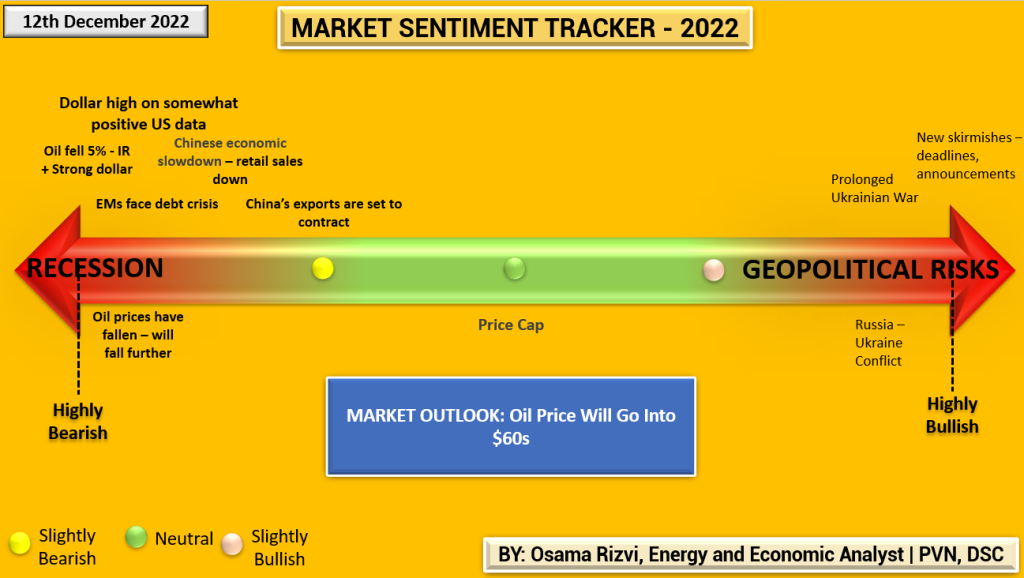Last few weeks have been full of interesting developments especially for oil markets. Brent lost 22 percent of its price wihtin one month from nearing $100 on 4th November to breaking the psychological barrier of $80 (now trading at $77). There are multiple factors for this:
1.Continuous build up of recessionary variables
– Rising interest rates
– More economists joining the chorus that US rates will peak at 6 percent or more
– Slowdown in Chinese economic growth
– Rising Covid-19 cases in China
– Falling retail sales, PMI, exports in China
– Prolonged cost of living crisis
– Recession in the UK
– Falling economic indicators of Eurozone, especially Germany, Italy and France
2. Due to (1) we are experiencing supply concerns receding and demand destruction dominating the narrative in oil markets due to which investors have been changing positions. According to an article in Reuters by John Kemp, hedge funds cut their positions in the previous days accumulating short positions. About 190 million barrels of long positions were cut between 8th of November to 29th of November. In just 21 days, positions equal to about 139 million barrels of oil were cut in Brent futures.
This has resulted in changing overall sentiment in markets which I try to track through my Market Sentiment Tracker 2022. The following is from my upcoming episode of Monday Macro View which you can watch on our Youtube Channel tomorrow (on Monday).

I believe moving forward, oil prices can fall into the range of lower 60s. What can be the factors that can tip them into this trajectory?
- A successful renegotiation of JCPOA aka Iran Deal.
- A debt crisis in the emerging market subsequently affecting the developed countries.
- A financial crisis being triggered due to China’s real estate problems.
- Bitcoin price crash.
Now these are some of the tail risks that can expedite a plunge in oil prices. But even without such events being eventuated the direction for prices remain downwards.
Speaking of challenges, emerging markets continue to face multiple ones. The biggest one being managing debt in a global monetary tightening cycle. Acording to an article by World Bank due to rising interest rates and strengthening dollar the debt servicing cost for poor and developing countries have reached the highest point since 2000. For instance, at the end of 2021 the external debt of these countries touched $9 trillion which was more than double as compared to a decade ago and almost 60 percent of the poorest countries in the world have crossed debt distress levels.

With the low and middle income countries spending one tenth of their export revenues to service their long term debt, it is simply a matter of time that rising interest rates will start to initiate currency crisis in various countries. This is exactly what is happening in Pakistan at the moment where the reserves are at three years low, $6.5 billion, enough to cover only 1 months of imports (the international benchmark is to have reserves for 3 months of imports).
We know that the size of these markets is very small as compared to developed countries but in this hihgly integrated global economy we don’t know how these things are connected to each other – recall sub prime mortgage crisis of 2008 where debt was securitized further and some person a small city in Southeast Asia ended up with debt that was to be paid back to some big hedge fund in the U.S.
These and other developments, that I will continue to discuss in this space, are some of the challenges that are piling up for the year 2023. It will be a bumpy ride.













